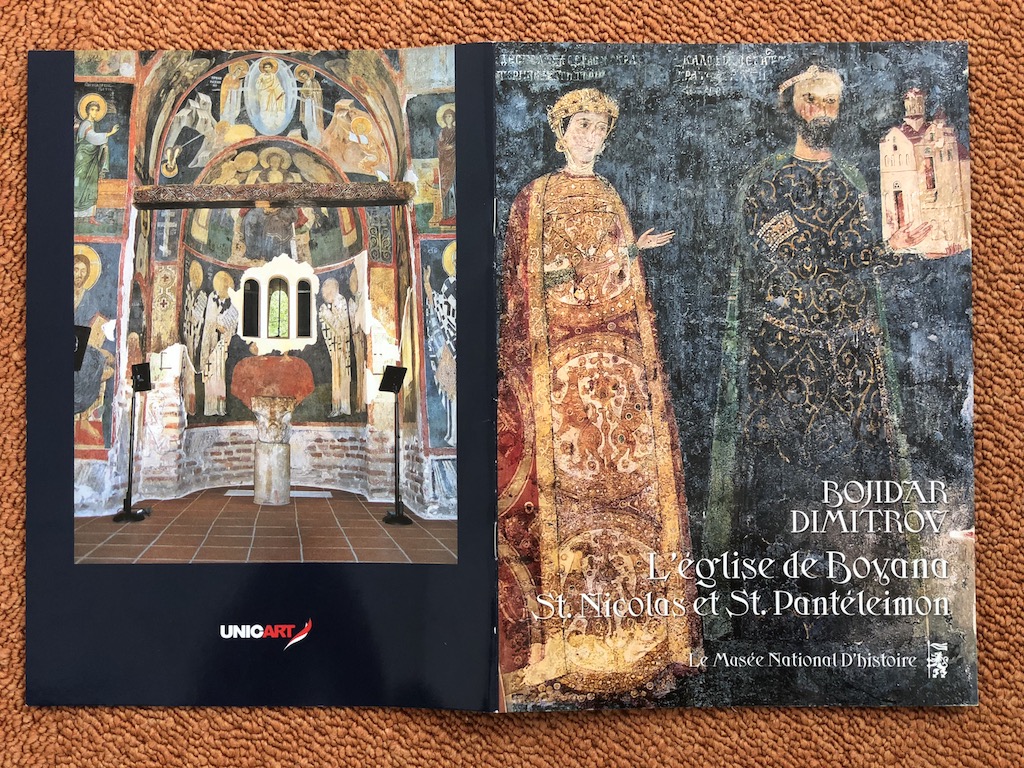Although it is a modest church in the suburbs of Sofia, the frescoes inside are worth seeing and very beautiful. The frescoes inside the church are very beautiful and vividly colored. I strongly felt that such frescoes are very rare even in European countries, and I was convinced that this is a must-see spot for sightseeing in Bulgaria, even though it is a modest place. Even though we had to wait for 30 minutes and the visit lasted only 10 minutes, we had a very fulfilling time.
The seventh World Heritage Site to be selected
After Rila Monastery, we went to Boyana Church in the suburbs of Sofia, which is also a World Heritage Site. This church is also selected as a World Heritage Site. There are more than 1,000 World Heritage Sites in the world today, and this Boyana Church is the 7th World Heritage Site. During the communist era, the church was owned by the state, but after the democratization, the city where the church is located bought it and still manages it. It is a famous spot for tourists from all over the world because of its proximity to Sofia.
It is also listed in Chikyu no Arukikata.
A church tucked away in a residential area in the suburbs of Sofia
It is quite possible to get there by public transport from Sofia. It won’t cost you much even by taxi. In fact, there were a lot of taxis near Boyana Church. We had a rental car. The parking lot is in the square near the entrance. Although it is a world heritage site, it is a normal residential area. There was a hotel and restaurant in the square, but only two at most.
We didn’t see any signboard to guide us to the church until we arrived here, so we just followed the directions of Google Maps navigation system.
Guided tours only, local arrangements OK on the day but advance booking is recommended.
I was a little bit lost until I entered the church because there was no guide that the entrance was here. Even so, the loss was about 5 minutes. It’s a small neighborhood.
The Boyana Church is free to enter, but to be honest, there’s not much to see on the grounds. There’s really nothing there lol. In other words, if you don’t see the inside, there is no point at all.
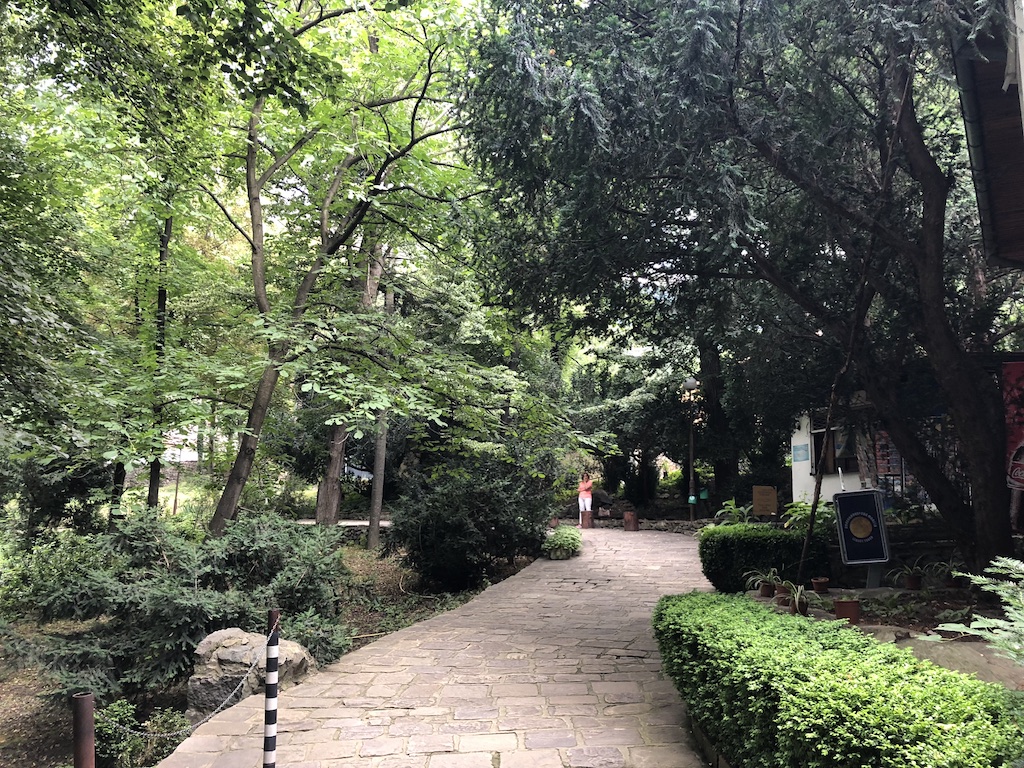
The interior of the church, with its frescoes, can be viewed on a guided tour, which is limited to 10 people per tour. The guided tour can be purchased at the reception desk on the right as you enter the church.
It seems that you can book this guided tour online. Because the number of people is very limited to 10 people per time, and there are many group visitors, it might be better to book in advance to make sure to visit the church. But we didn’t know that at all, so we went there and applied for it on the day. As a result, we had to wait for about 20 minutes, but we were able to visit the museum safely. The guided tour was in English, and of course, there may have been some in Bulgarian. In any case, it is a relief that English is understood. Come to think of it, I had almost no experience of difficulty in communicating in English during my trip to Bulgaria.

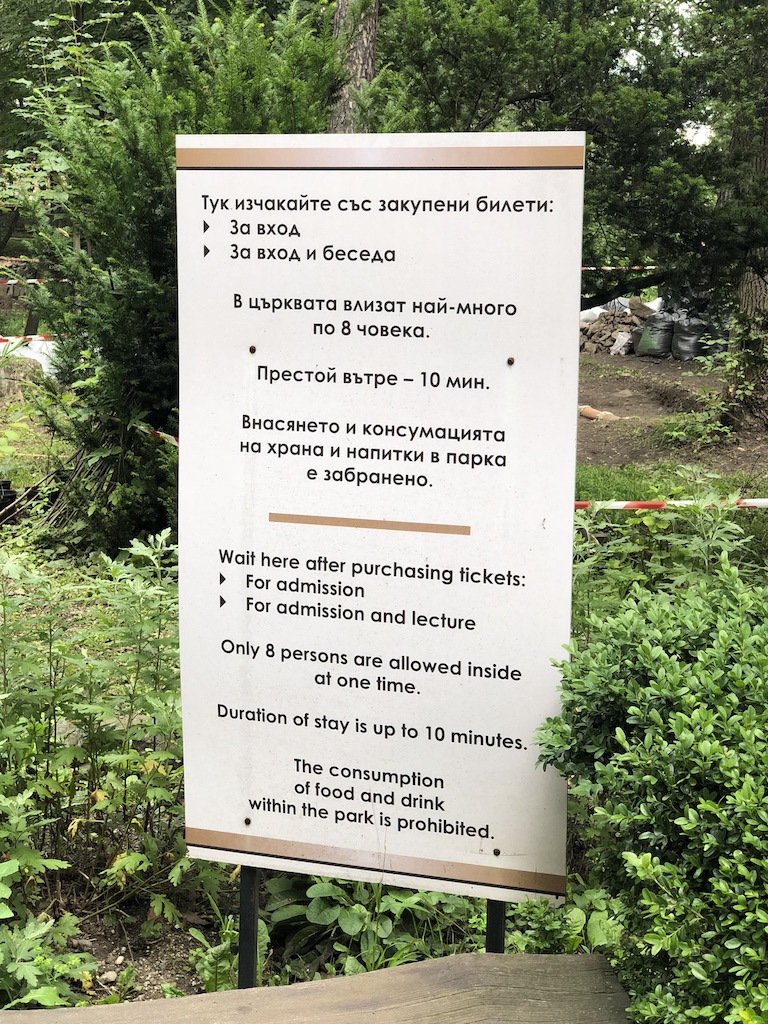
It seemed that the number was written on the receipt we received when we applied for the guided tour, but we had no idea how many groups we applied for and when we would be called. We showed the receipt to the attendant at the entrance of the church and waited around until we were called. Since we were the only suspicious Orientals, the attendant called us when our turn came.

Vivid and beautiful frescoes
You go through a small entrance that is only about 1 meter high and go inside. First of all, you are instructed to put your baggage in the space immediately after entering. There is no locker, so I felt uneasy about the security because I felt like putting it on the stand, but I thought it was okay because there were only about 10 people inside at most, including the attendants and tourists, and the inside was narrow and sealed. The inside of the church was air-conditioned for the preservation of the frescoes and because it is summer now.
You can’t take pictures of the inside of the church, so I’ll show you what kind of frescoes I saw on the pamphlet I bought at the souvenir shop of the church. By the way, this pamphlet was available in various European languages including the local language, but I bought the French version to study French as usual. The following contents are based on this pamphlet, but my French is at the beginner level, so I sometimes referred to the guidebook and the internet (Wikipedia).

The church was first built in the 9th century. After that, the church was renovated in the 11th, 13th and 19th centuries to become what we see today. The architecture of the church itself is not very distinctive, but the many beautiful frescoes inside have made the church world-famous.
The frescoes were first painted here in the 11th century, and then painted over and restored in the 13th and 16th centuries. The frescoes that we can see today were painted later, as mentioned above, but the original frescoes were painted in 1259, the year in which they were clearly recorded. About 240 of these frescoes are crowded into the small church. It is true that there are many frescoes in the church, but it doesn’t seem to be enough space for 240 frescoes. It’s really a small space, but it’s very dense and full of contents.
The inside of the building is forbidden to take pictures, so we will show you the pictures in the brochure.
My first impression of the frescoes was that the « blue » was vivid and beautiful. I felt that the light was penetrating well, but the color was the profound color of the deep sea.
The person who had the church restored and the frescoes painted inside was a nobleman named Sebastocrator Kaloyan, who moved to the city of Boyana during this period. The reason why we can learn more about the year of the frescoes and their sponsors is that there is a plaque embedded in the northern wall of the church that records the period of the frescoes, including the information that they were donated by this person. This is also a very valuable historical asset.

The contents of the frescoes range from scenes from the New Testament to episodes of the saints. The oldest part of the vault (the cupola) shows the Christ Pantocrator, followed by the major feasts and scenes from the Passion of Christ.


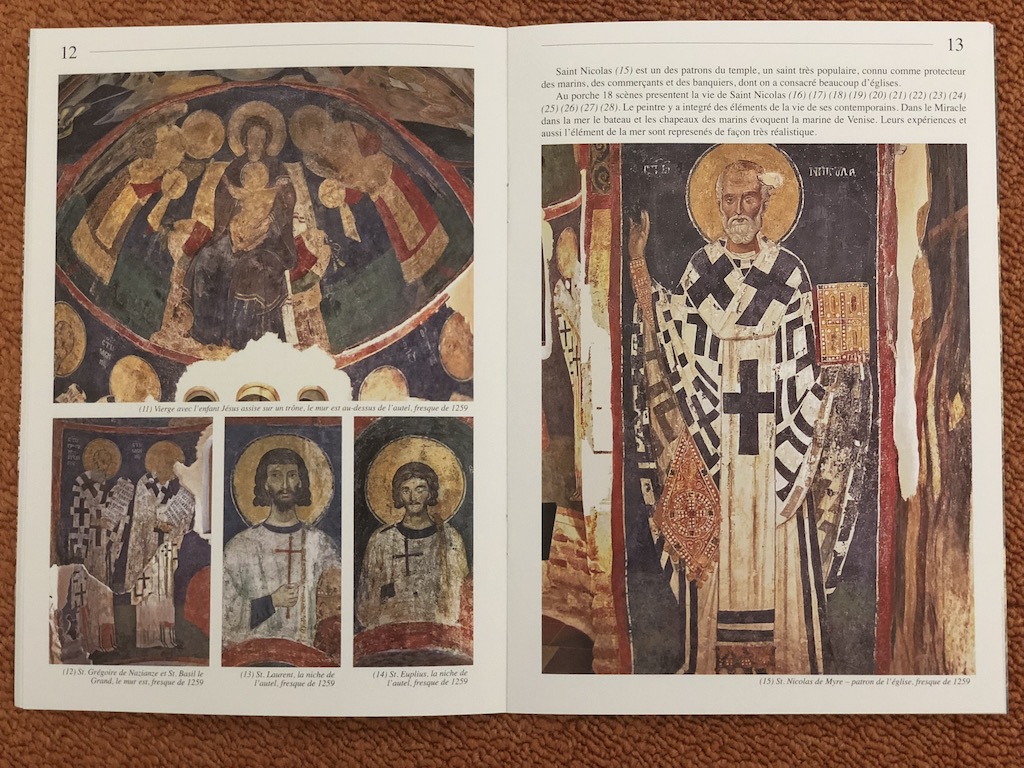
This is followed by descriptions of numerous saints, and then many episodes from the life of St. Nicolas. St. Nicolas is one of the most famous of all the saints, and he is a saint in all Christian religions that have the concept of saint. St. Nicolas is also known as the patron saint of shipping. You can also see paintings of St. Nicolas on the subject of navigation and the sea. It seems that he is also the patron saint of merchants and bankers in addition to shipping.

Apart from the biblical and saintly frescoes, there were frescoes of the Bulgarian emperor Constantine I and his wife, and of the noble couple Kaloyan, who sponsored the Boyana church frescoes.
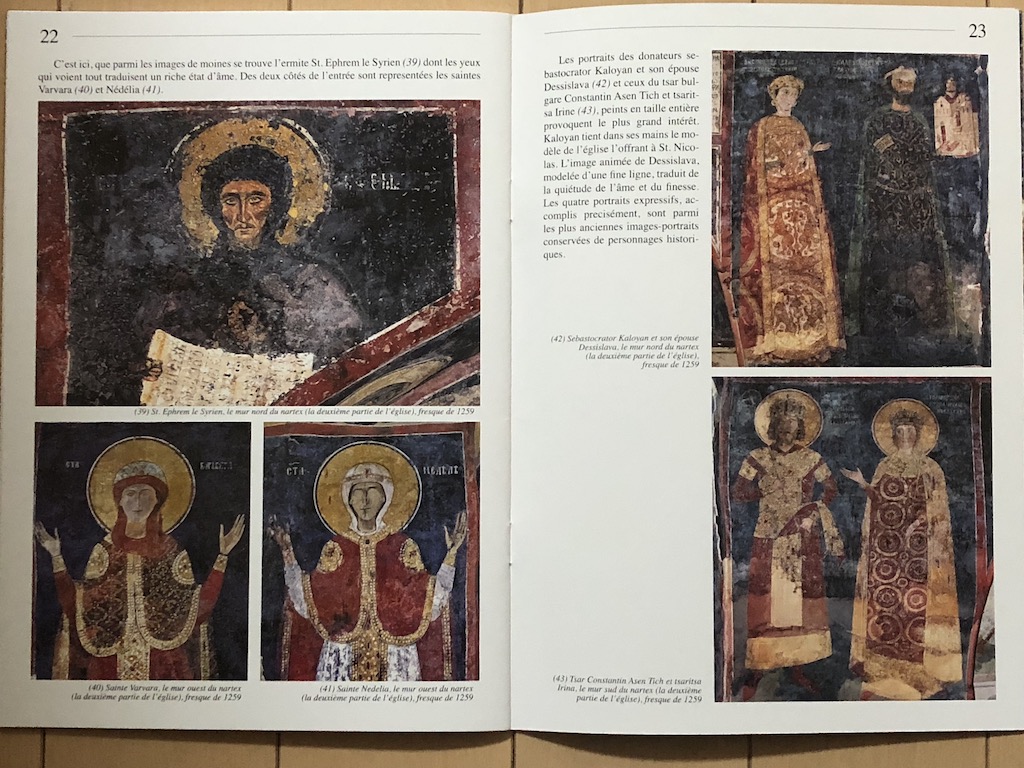
All of the frescoes are vividly colored and clearly preserved, and I strongly felt that they are very rare even in European countries. I was convinced that this is a must-see place in Bulgaria. Although we waited for 30 minutes and visited the museum for only 10 minutes, we had a very fulfilling time.
In addition, I heard that there was an archaeological museum nearby, but I could not visit because of the time. However, the museum is said to be quite extensive. After this, we visited many historical sites in Bulgaria, including the Thracian tombs, and learned a lot. If we had come here after we had already visited Bulgaria, we would have definitely made time for it. If I have the chance to come back next time, I will definitely visit.
